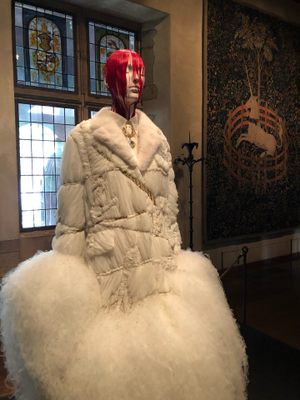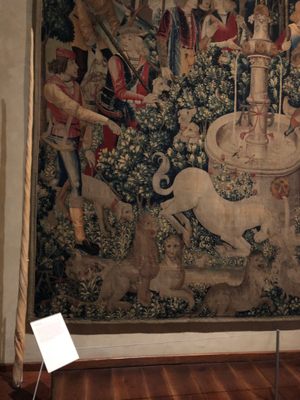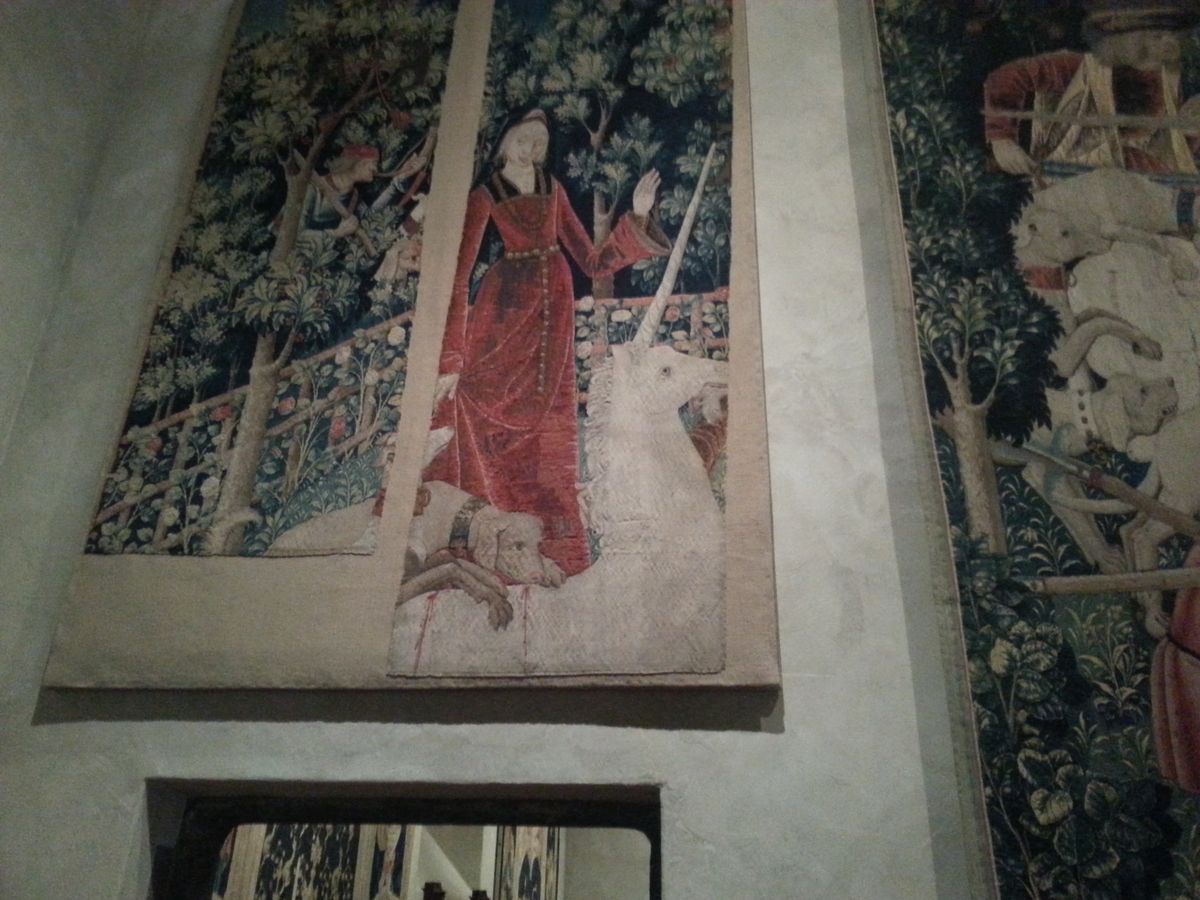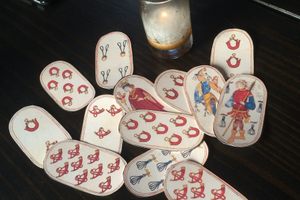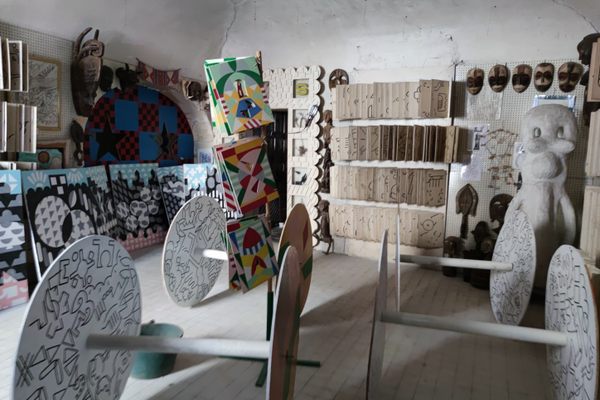About
Comprised of seven wall hangings, each at least 12 feet high by eight feet wide, the Unicorn Tapestries at the Cloisters were created 500 years ago by an unknown artist for unknown royalty in Western Europe.
In violent and disturbing detail, the series tells the story of hunters stalking through the woods with their canines, hunting the mythical beast. As the story progresses, the unicorn is found and surrounded, ambushed and eventually attacked from all sides. Despite getting away from the hunters, the unicorn is eventually calmed by a virgin maiden and killed while under her charm.
Scholars who have studied the tapestries date them from 1495-1505. The design resembles Parisian aesthetic at the time, but it was likely the tapestries were actually produced in Brussels (although even these details disputed). Despite a general geographic location, the identity of the author is completely unknown. The tapestries' only connection to the past is a small cipher, showing the letters A and E intertwined by some rope, which may signify the artist or the owner of the work.
From this slight hint, some have devised that Anne of Brittany commissioned the works to celebrate her marriage to Louis XII, but there is no conclusive proof. Despite the mystery, art historians have reveled in the chance to decipher the tapestries, often comparing the hunt of the unicorn to Christ's persecution. The unicorn itself, once a pagan symbol, became a symbol for Christ.
All of the vibrant tapestries are available for personal interpretation and are held in the Met's Cloisters in upper Manhattan. In the same room, a narwhal tusk is displayed. Medieval Europeans often mistook their tusks as evidence of the mythical beast.
Related Tags
Know Before You Go
Reserve tickets on the Met's website. Tapestries are on view in Gallery 17.
Community Contributors
Added By
Published
January 4, 2012







